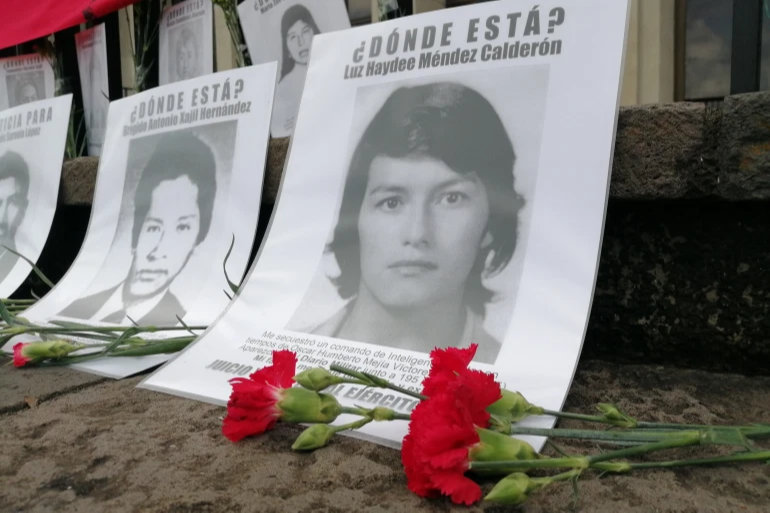
Marcia Mendez has spent decades seeking justice for her sister, detained and disappeared in Guatemala in 1984. [Sandra Cuffe/Al Jazeera]
Guatemala City, June 14 (RHC)--For years, Marcia Mendez has never stopped searching for her sister. Now, decades after Luz Haydee was disappeared by Guatemalan military forces, justice may be on the horizon, after a Guatemalan judge this month ordered a trial into crimes committed in the 1980s.
“For us this is already a huge step forward,” Mendez told Al Jazeera outside the Guatemala City courthouse complex following the hearing last week. Luz Haydee Mendez Calderon was detained and disappeared in 1984 – one of an estimated 45,000 people disappeared during the civil war in Guatemala. An estimated 200,000 people were killed over the course of the 1960-1996 armed conflict.
At the time, Mendez Calderon was secretary of international relations for the Guatemalan Labour Party, which had been forced underground after a United States-backed coup in 1954 and became one of the armed fighter groups involved in a 36-year conflict with the military.
She was also a mother of two. Her nine-year-old daughter was sexually assaulted during the abduction, and together with her younger brother was held and tortured for several days. The children reappeared but their mother never did.
In 1999, leaked documents bolstered the family’s search for the truth. The Diario Militar, or Death Squad Diary, documented the abductions, torture, disappearances and executions of 183 people, including Mendez Calderon, between 1983 and 1985. The military intelligence dossier includes a section with a numbered list of the 183, with their names, affiliations, photograph, date and location of abduction, and other basic details.
On June 9, a Guatemalan judge ordered six ex-military officers to face trial for their roles in the allegations contained in the Death Squad Diary – a move that was celebrated by relatives of the victims, who also reiterated calls for their loved ones’ remains to be located and returned.
Most – but not all – of the victims listed in the Death Squad Diary were fighter group members and sympathisers, student movement organisers, union leaders, writers, and other dissidents. Some were just children.
In most cases, victims were held for weeks and then killed, according to the document. So far, though, the remains of only eight Death Squad Diary victims have been exhumed and identified, including six found in clandestine graves on a former military base 70 km west of the capital, Guatemala City.
All six defendants were indicted for crimes against humanity, and five of them were indicted for forced disappearance. They all also stand accused of murder, attempted murder or both, for the killings. The charges relate to 20 individual victims, based on witness testimonies and documentation gathered over the span of more than two decades.

